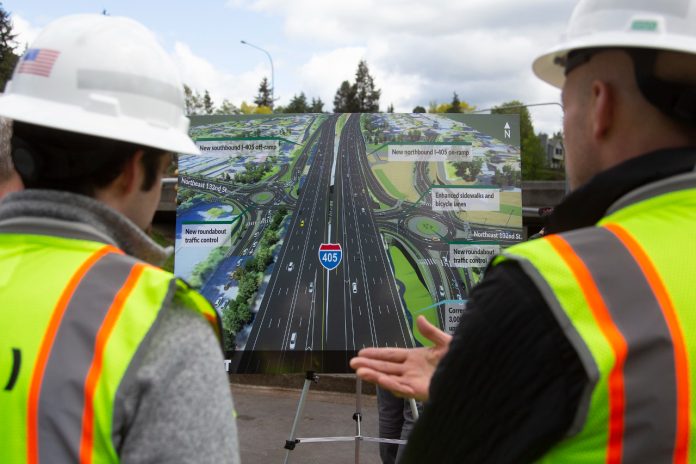
Washington State highway expansion plans are billions over budget and soaking up resources from maintenance.
Despite a state transportation system full of unmet needs, the 60-day legislative session that started last Monday will likely see lawmakers spend the lion’s share of the time they devote to transportation spending discussions talking about how to keep a relatively small number of large transportation projects on track. With materials costs increasing and a relatively small number of contractors available to tackle billion-dollar megaprojects, costs have been steadily increasing for a number of years, but this session represents a key moment where the legislature needs to grapple with the trade-offs that will come from keeping these projects going.
Before the legislative session had even started, the number of projects seeing cost overruns that the legislature would need to address this year had mounted was considerable. First, $254 million on top of what had been previously allocated to secure a contract for the widening of I-405 between Bothell and Kirkland. Then, an additional $725 million to keep the SR 520 program in Seattle on track, including an additional $683 million for the Portage Bay Bridge and Roanoke Lid, the last major component of the overall 520 bridge replacement project.
Then came the news that cost assumptions on WSDOT’s court-mandated fish culvert program, opening up barriers created by state highways that are inhibiting salmon recovery, had been out of date and that the program would need another 3.5 to four billion dollars to meet its deadline by the end of the decade. Taken together, these unanticipated expenditures look to dominate not only discussions over this year’s supplemental transportation budget, which will extend through the middle of next year, but well into the future as commitments made now take years to fully play out.
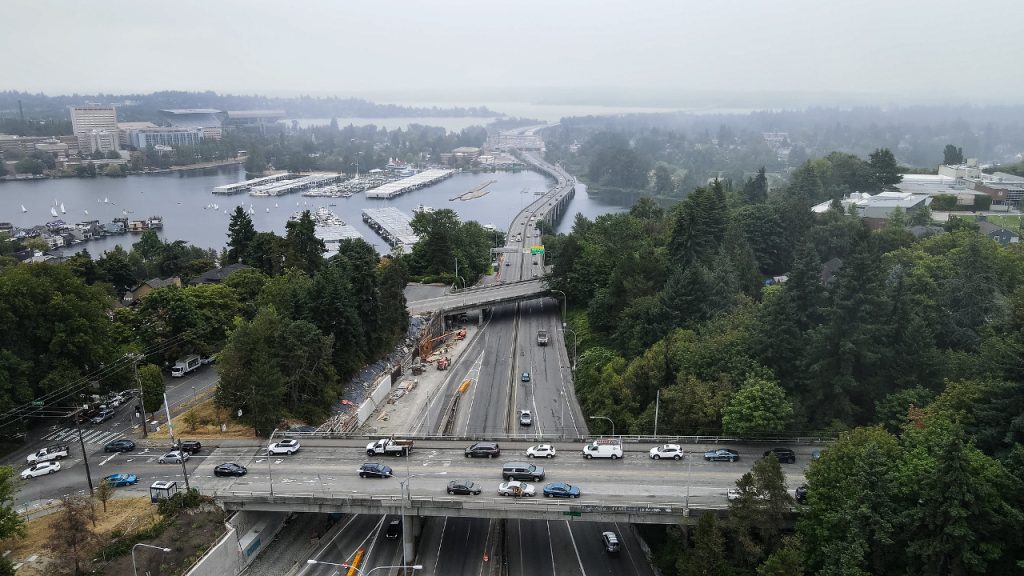
But so far, there haven’t been any signs that there’s strong support behind the idea of reconsideration of any of Washington’s highway megaprograms.
“While it’s disappointing, it’s not surprising that we’ve seen significant cost escalation on some of our projects,” Senator Marko Liias, chair of the state senate’s transportation committee, said a few days before the start of the session. “I don’t support cancelling any projects. I think we’ve made promises to the public, we’ve made promises to communities, they’re depending on [these projects], for economic development, for the future of their communities. But I do think we need to ask some tough questions about how and when we get projects done.”
This session’s short dash to update the state transportation budget is happening against a continued backdrop of increasing traffic fatalities in every corner of the state. According to preliminary data from the Washington Traffic Safety Commission, the number of people killed in traffic violence in the state in 2023 is expected to exceed 800, a number that the state has only seen in one other year since 1981. Last year, lawmakers had started their session by laying out a laundry list of proposed changes to the state’s traffic laws, but very few of those laws made it across the finish line. This session may see a few more pass, but the focus has clearly shifted away, even as the reality worsens.
With highway megaprojects and culverts eating up a larger and larger share of the state transportation budget due to cost overruns, the state’s maintenance budget is also set to suffer the consequences. In a presentation set to be delivered early this week to the senate transportation committee, WSDOT Secretary Roger Millar will note that the overall state transportation budget still has a $1.51 billion shortfall when it comes to maintaining its own assets, two-thirds of that impacting the state highway system.
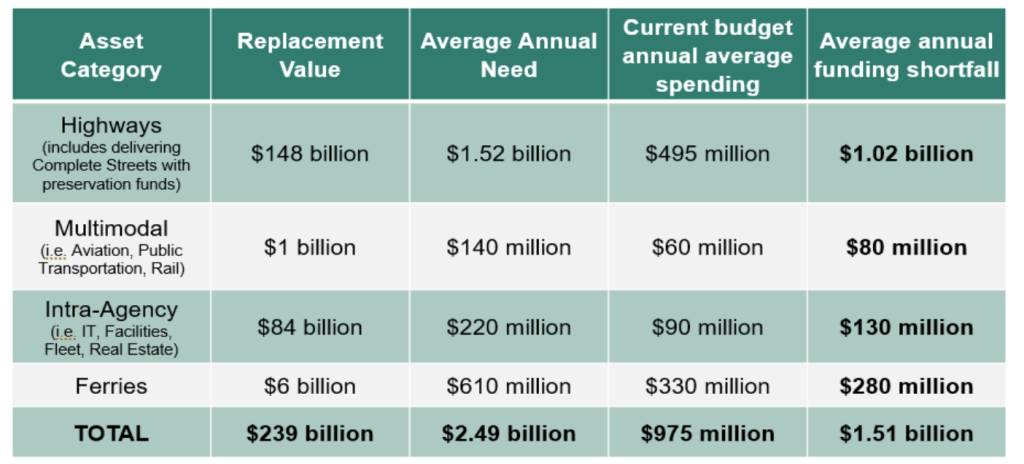
Thanks to the “Complete Streets” mandate the legislature passed in 2022, highway maintenance and preservation dollars are inextricably linked with safety upgrades, as WSDOT is required by law to bridge any bike and pedestrian network gaps when it completes nearly every type of major maintenance project. And so underfunding maintenance is delaying safety gains that could be coming to state highways while at the same time keeping the state behind when it comes to its significant maintenance backlog.
Governor Inslee’s proposed budget focuses on ferries
The proposed supplemental transportation budget, released by Governor Jay Inslee in December, offers a starting point for proposed tweaks that lawmakers may make in the coming weeks. The messaging from his office puts Washington State Ferries center stage, with very few proposed tweaks to WSDOT’s broader transportation network.
State Ferries is undeniably facing a twin staffing and operations crisis right now, with many routes operating with lower levels of service than they have in the past due the staffing shortage. Inslee’s budget would invest millions in adding vessel crew and dispatch staff, increase staff development programs at Washington State Ferries, and would double the budget that the state has in place to recruit ferry staff from out-of-state. It would also implement a new crew shuttle that allows vessel staff starting their day on the San Juan Islands to catch a ride from Anacortes.
It also continues $1 million in annual funding to keep Kitsap Transit’s fast ferry operating between Seattle and Bremerton, offering a backup and a reliable alternative to the one-boat service currently provided by Washington State Ferries on that route.
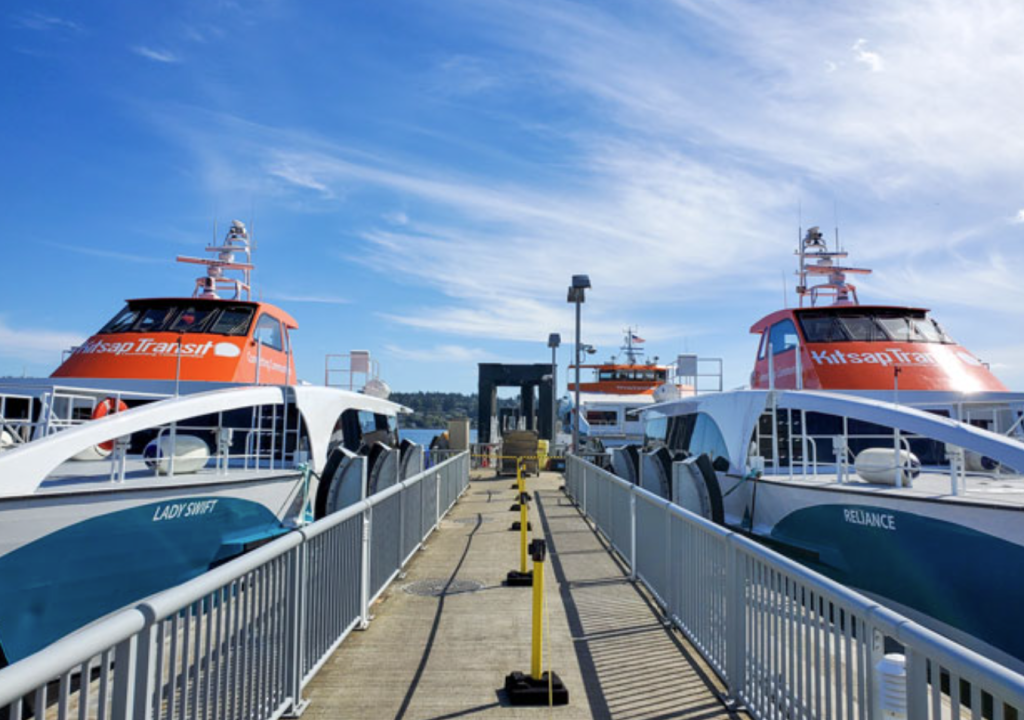
Apart from ferries, additional funding for Washington State Patrol is another area of focus for Inslee’s budget, allocating $30.9 million to pay for approximately 80 additional troopers and 100 other positions for the state patrol, beyond what had been allocated in the 2023-2025 budget. The idea that additional state troopers are needed to make headway on improving traffic safety is a bipartisan consensus in Olympia, though the Governor’s budget does include some funding to pilot the use of automatic speed cameras on state highways, something that local cities are currently allowed to implement but which has no systemic implementation plan.
Overall, though, Inslee’s budget leaves it to the legislature to figure out how to fill most of the funding gaps on highway projects, including on the Portage Bay Bridge and Roanoke Lid. It also leaves some other projects promised to communities in the Move Ahead Washington transportation package on long timelines that may as well be indefinite holds at this point. For example, $25 million promised to Bremerton’s Warren Avenue bridge, a centerpiece project in improving walking and biking infrastructure in that rapidly growing city, is pegged for allocation until sometime after 2039. The same goes for the $50 million promised to Seattle to complete upgrades on one of the most deadly state highway corridors in Washington, Aurora Avenue N.
Just $3.5 million that had been promised to Kenmore to replace sidewalks along 61st Avenue NE, one of the primary north-south routes in that city, isn’t set to be allocated until the 2040s either, if the legislature adopts the Governor’s budget as amended. The City of Kirkland couldn’t even get the $150,000 earmarked to add rapid flashing beacons to one intersection in that city, on State Street at 7th Avenue S. Those promises that have been made to communities appear to carry less weight than the ones around state highway expansions advocated for by freight and business interests.
Continued cost increases likely in coming years
The current crop of highway projects isn’t likely to be the only ones that see significant cost increases. In the coming years, the state expects to award contracts on the widening of State Route 18 near Issaquah ($665 million), the second stage of the extension of State Route 167 toward the Port of Tacoma ($579 million) and the final segments of the extension of US Route 395 in Spokane, the North Spokane Corridor. All of these projects have the potential to come in higher than anticipated, creating repercussions that reverberate throughout the entire state transportation budget.
And then there’s the Interstate Bridge Replacement (IBR), which looks to expand I-5 along a five-mile stretch at the Oregon-Washington border, expanding seven interchanges and replacing the aging twin bridges over the Columbia River’s main channel. For what is almost certain to be the most expensive highway project in either state’s history, Washington has earmarked $1 billion for the IBR, an amount that Oregon matched in 2023.
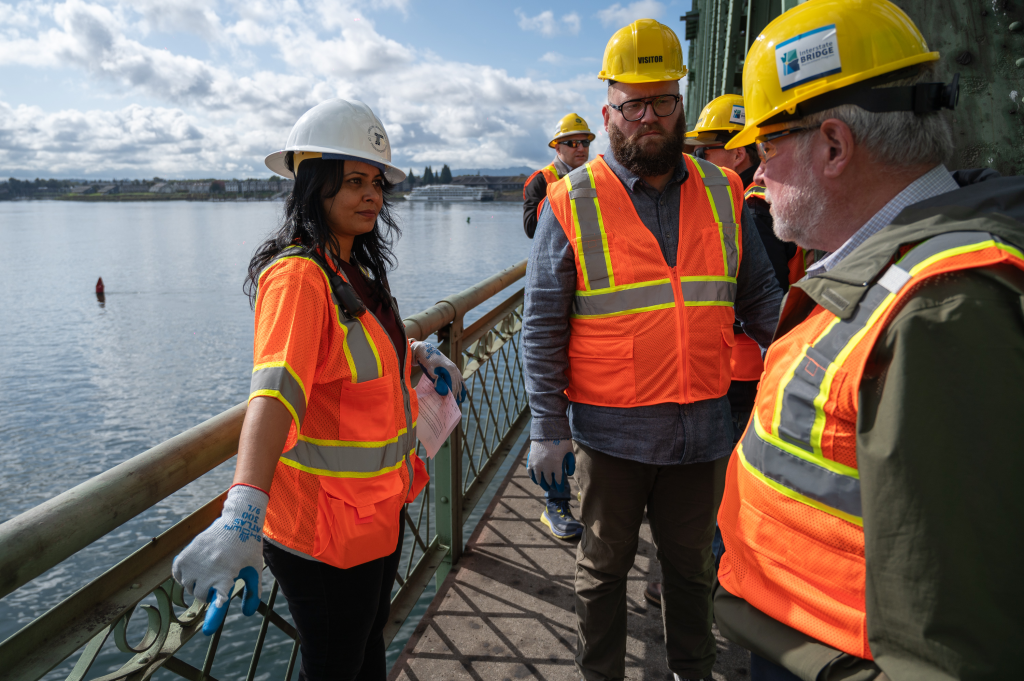
But earlier this month, Oregon Public Broadcasting reported that Greg Johnson, a veteran highway builder from Michigan and the program’s administrator, was signaling that cost estimates could be about to be reassessed upwards from the $7.5 billion top estimate that had been put out in 2022. The $600 million grant recently awarded as part of the USDOT “Megagrant” program will only be able to go so far when it comes to this highway project.
“One of the things all mega projects are experiencing is this inflation we’ve seen in the construction industry,” Johnson said, as reported by OPB. “We are going to be reissuing an overall program estimate probably later this summer.”
Earlier this month, the IBR team briefed the senate’s transportation committee where they noted that the total IBR program will ultimately be around 20 separate awarded contracts, with the first major work set to start around the Columbia River by late 2026. Once that project starts, it will be very hard to control costs by reassessing individual elements.
All told, lawmakers have a tall order in front of them, needing to find a way to keep this laundry list of expansion projects moving, as costs continue to escalate and the maintenance and safety needs of the state’s existing infrastructure continue to mount. Ultimately, making it work may require a shift of thinking, but every project on the list has an even longer list of powerful backers who’ll do everything they can to ensure that their project gets put at the top of the list.
Ryan Packer has been writing for The Urbanist since 2015, and currently reports full-time as Contributing Editor. Their beats are transportation, land use, public space, traffic safety, and obscure community meetings. Packer has also reported for other regional outlets including BikePortland, Seattle Met, and PubliCola. They live in the Capitol Hill neighborhood of Seattle.

